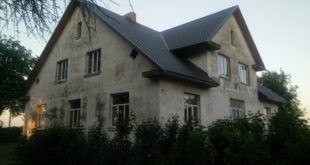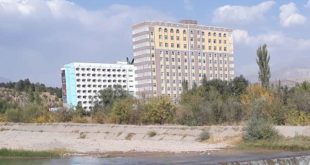| 2007 | 2008 | 2009 | 2010 | 2011 | |||||
| Total Market Size | $ 2-3 billion | $ 2-3 billion | $ 2-3 billion | $ 2-3 billion | $ 2-3 billion | ||||
| Total Local Production | 17.4 billion kWh | 14.8 billion kWh | 16.09 billion kWh | 16.4 billion kWh | 16.2 billion kWh | ||||
| Total Exports | 4.2 billion kWh | 1 billion kWh | n/a | 179.8 million kWh | 190.9 million kWh | ||||
| Total Imports | 4.3 billion kWh | 3.025 billion kWh | n/a | 338.9 million kWh | 65 million kWh | ||||
| Imports from the U.S. | n/a | n/a | n/a | n/a | n/a | ||||
(Source: State Statistics Agency 2011 and U.S. Embassy staff estimates)
Domestic demand for electricity is about 24.0 billion kWh, yet production in 2011 totaled only 16.2 billion kWh. In view of this, and past difficulties importing energy from its neighbors, energy sector development is a top priority for the government of Tajikistan. The government is implementing a two-track strategy: (i) improvement of domestic energy sector, and (ii) development of large scale projects to generate electricity for exports. Development will generate economic growth and create opportunities for diversification of export earnings.
Tajikistan’s power sector is managed by the open joint stock holding company Barki Tojik, a vertically integrated utility owned by the Government of Tajikistan. The total domestic generation capacity is 5,065 including 4,800 MW of hydroelectric capacity (including 4,400 MW along the Vakhsh River cascade) and nearly 300 MW from the combined heat and power plant (CHP) in Dushanbe. Tajikistan reportedly has 4% of the world’s hydro energy resources and has the potential to produce more than 300 million MWh of electricity per year, but currently produces only 16.2 million MWh. The major constraint for generation is the seasonal nature of hydroelectric power: reservoir levels run low in winter, forcing major power rationing.
The Tajikistan transmission system is part of the Central Asia Power System and consists of two voltage levels: 500 kV and 220 kV. Tajikistan’s northern and southern networks were connected in 2009. A 500 kV power transmission line, financed by the Chinese government, was completed in August of 2009.
There are three distribution companies in Tajikistan: the Northern Distribution Company, the Southern Distribution Company, and the Pamir distribution company. The first two are part of Barki Tojik, while the latter is part of the independent, vertically integrated Pamir Energy Company, run with assistance from the Government of Switzerland, the Aga Khan Foundation for Economic Development (an investment fund of the Aga Khan Foundation), and the International Finance Corporation (IFC).
Billing and collection is the responsibility of Barki Tojik subsidiaries. There are approximately one million customers.
The Tajik Government, in coordination with World Bank guidelines, has been steadily increasing energy costs. The most recent increase of 25% for residential consumers went into effect in 2009. Tariffs are regulated by the Ministry of Economic Development and Trade and the government’s Anti-Monopoly Agency. The current rate for residential consumers is $0.018 per kWh and for industrial enterprises $0.047 per kWh.
TALCO (Tajik Aluminum Company) consumes up to 50% of all electrical energy produced in Tajikistan and receives a special electricity tariff rate of $0.017 per kWh as of January 2010. Agricultural uses account for approximately 30% of electricity consumption, while others, including residential consumers, account for approximately 20%.
A number of projects, including construction of hydro- and combined heat and power stations and high-voltage power transmission lines, are at various stages of completion. Some of them include:
The most controversial hydro power project is the Roghun Hydro Power Station, designed and planned in Soviet era. If built, the dam will be the highest in the world at a height of 335 meters. The Government of Uzbekistan opposes the project, claiming it will negatively affect downstream flows that are critical for Uzbekistan’s agricultural sector and poses environmental threats. Dam construction is on hold while the World Bank conducts assessments of the viability and sustainability of the project.
 Комрон.инфо
Комрон.инфо



